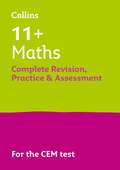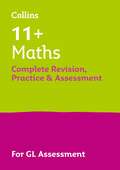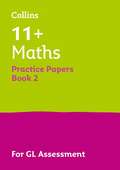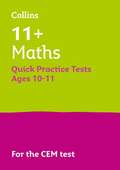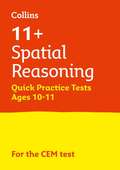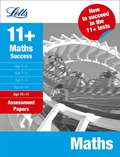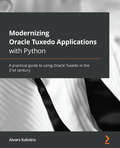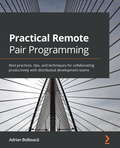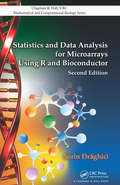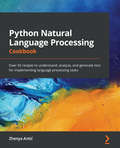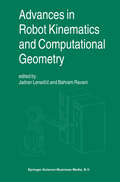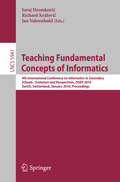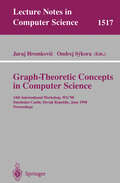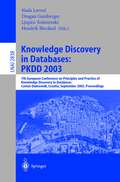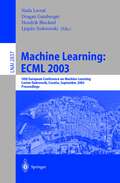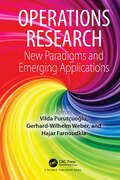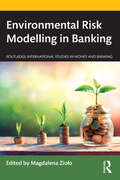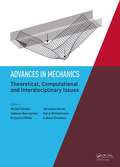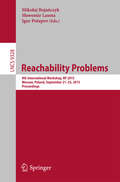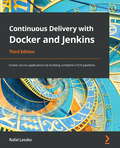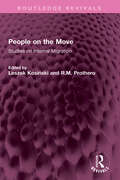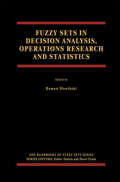- Table View
- List View
الفصل في الملل و الآهواء و النحل
by ابن حزمإن كثيراً من الناس كتبوا في افتراق الناس في دياناتهم ومقالاتهم كتباً كثيرة جداً فبعض أطال وأسهب وأكثر وهجر واستعمل الأغاليط والشغب فكان ذلك شاغلاً عن الفهم قاطعاً دون العلم وبعض حذف وقصر وقلل واختصر واضرب عن كثير من قوي معارضات أصحاب المقالات فكان في ذلك غير منصف لنفسه في أن يرضى لها بالغبن في الإبانة وظالماً لخصمه في أن لم يوفه حق اعتراضه وباخساً حق من قرأ كتابه إذ لم يغنه عن غيره وكلهم إلا تحلة القسم عقد كلامه تعقيداً يتعذر فهمه على كثير من أهل الفهم وحلق على المعاني من بعد حتى صار ينسي آخر كلامه أوله وأكثر هذا منهم ستائر دون فساد معانيهم فكان هذا منهم غير محمود في عاجله وآجله.
الرسالة المستطرقة فى علوم الحديث
by محمد بن جعفر الكتانيوقد قال (ابن حجر) في أول (مقدمة فتح الباري) ما نصه: اعلم أن آثار النبي ـ صلى الله عليه وسلم ـ لم تكن في عصر الصحابة وكبار التابعين مدونة في الجوامع، ولا مرتبه، لأمرين: أحدهما: أنهم كانوا في ابتداء الحال قد نهوا عن ذلك، كما ثبت في (صحيح مسلم)، خشية أن يختلط بعض ذلك بالقرآن العظيم. وثانيهما: لسعة حفظهم، وسيلان أذهانهم، ولأن أكثرهم كانوا لا يعرفون الكتابة. ثم حدث في أواخر عصر التابعين تدوين الآثار، وتبويب الأخبار، لمّا انتشر العلماء في الأمصار، وكثر الابتداع من الخوارج والروافض ومنكري الأقدار، واتسع الخرق على الراقع، وكاد أن يلتبس الباطل بالحق. فأول من جمع في ذلك (الربيع بن صبيح) (وسعيد ابن أبي عروبة) وغيرهما. دونت أحكام الحديث في منتصف القرن الثاني وكانوا يصنفون كل باب على حده، إلى أن قام كبار أهل الطبقة الثانية في منتصف القرن (ص 6) الثاني، فدونوا الأحكام. فصنف (الإمام مالك) (الموطأ) بالمدينة، وتوخى فيه القوي من حديث أهل الحجاز، ومزجه بأقوال الصحابة، وفتاوى التابعين، ومن بعدهم. أول من صنف الحديث بمكة ابن جريج وصنف (أبو محمد عبد الملك بن عبد العزيز بن جريج) بمكة، (وأبو عمرو عبد الرحمن بن عمرو الأوزاعي) بالشام، (وأبو عبد الله سفيان بن سعيد الثوري) بالكوفة، (وأبو سلمة حماد بن سلمة بن دينار) بالبصرة. ثم تلاهم كثير من أهل عصرهم في النسج على منوالهم، إلى أن رأى بعض الأئمة منهم، أن يفرد حديث النبي ـ صلى الله عليه وسلم ـ خاصة، وذلك على رأس المائتين. فصنف (عبيد الله بن موسى العبسي الكوفي) مسندا، وصنف (مسدد بن مسرهد البصري) مسندا، وصنف (أسد بن موسى الأموي) مسندا، وصنف (نُعيم بن حماد الخزاعي) نزيل مصر مسندا، ثم اقتفى الأئمة بعد ذلك أثرهم، فقلَّ إمام من الحفاظ إلا وصنف حديثه على المسانيد، (كالإمام أحمد بن حنبل) (و إسحاق بن راهويه) (وعثمان بن أبي شيبة) وغيرهم من النبلاء. ومنهم من صنف على الأبواب والمسانيد معا (كأبي بكر بن أبي شيبة) اهـ. وعبارته في (إرشاد الساري) قال: منهم من رتب على المسانيد (كالإمام أحمد بن حنبل) (و إسحاق بن راهويه) (وأبي بكر ابن أبي شيبة) (وأحمد بن منيع) (وأبي خيثمة) (والحسن بن سفيان) (وأبي بكر البزار) وغيرهم. ومنهم من رتب على العلل: بأن يجمع في كل متن طرقه، واختلاف الرواة فيه، بحيث يتضح إرسال ما يكون متصلا، أو وقف ما يكون مرفوعا، أو غير ذلك. ومنهم من رتب على الأبواب الفقهية، وغيرها، ونوّعه أنواعا، وجمع ما ورد في كل نوع، وفي كل حكم إثباتا ونفيا، في باب فباب، بحيث يتميز ما يدخل في الصوم مثلا عما يتعلق بالصلاة. وأهل هذه الطريقة منهم من تقيد بالصحيح (كالشيخين) وغيرهما، ومنهم من لم يتقيد بذلك كباقي الكتب الستة، وكان أول من صنف في الصحيح (محمد بن إسماعيل البخاري). ومنهم المقتصر على (ص 7) الأحاديث المتضمنة للترغيب والترهيب، ومنهم من حذف الإسناد واقتصر على المتن فقط، (كالبغوي) في (مصابيحه) (واللؤلؤي) في (مشكاته) اهـ.
الأخلاق والسير في مداواة النفوس
by أبي محمد علي بن حزم الأندلسي الظاهريقد جمعت في كتابي هذا معان كثيرة أفادنيها واهب التمييز تعالى بمرور الأيام وتعاقب الأحوال بما منحني عز وجل من التهمم بتصاريف الزمان والإشراف على أحواله حتى أنفقت في ذلك أكثر عمري وآثرت تقييد ذلك بالمطالعة له والفكرة فيه على جميع اللذات التي تميل إليها أكثر النفوس وعلى الازدياد من فضول المال ورقمت كل ما سبرت من ذلك بهذا الكتاب لينفع الله تعالى به من شاء من عباده ممن يصل إليه ما أتعبت فيه نفسي واجهدتها فيه واطلت فيه فكري فيأخذه عفوا وأهديته إليه هنيئا فيكون ذلك أفضل له من كنوز المال وعقد الأملاك إذا تدبره ويسره الله تعلي لاستعماله. وانا راج في ذلك من الله تعالي أعظم الأجر لنيتي في نفع عباده وإصلاح ما فسد من أخلاقهم ومداواة علل نفوسهم وبالله تعالى استعين وحسبنا الله ونعم الوكيل
Collins 11+ Maths Complete Revision, Practice And Assessment For Cem Tests
by Collins 11Exam Board: CEM. Level & Subject: 11+ Maths. Suitable for the 2021 tests. All you need to study for 11+ Maths in one place! Build confidence for success in the 11 Plus tests with comprehensive and realistic preparation, practice and tests in one book.
Collins 11+ Maths Complete Revision, Practice And Assessment For GL Assessment Tests
by Collins 11Exam Board: GL. Level & Subject: 11+ Maths. All you need to study for 11+ Maths in one place! Build confidence for success in the 11 Plus tests with comprehensive and realistic preparation, practice and tests in one book.
Collins 11+ Maths Practice Papers Book 2: For The 2020 Gl Assessment Tests (PDF)
by Letts 11Realistic practice in the style and format of the 11+ Maths GL multiple-choice tests.
Collins 11+ Maths Quick Practice Tests Age 10-11 (PDF)
by Letts 11Make sure your child is ready for the 11+ CEM Assessment Tests by familiarising them with the real thing! This range of Maths Quick Practice Tests gives children plenty of opportunity to test themselves in short, timed bursts, helping to build confidence and ensure test success.
Collins 11+ Spatial Reasoning Quick Practice Tests Age 10-11 (PDF)
by Letts 11Making sure your child is ready for the 11+ CEM Assessment Tests by familiarising them with the real thing will help them do their very best in the 2020 11+ tests. The Collins 11+ Quick Practice Test range gives children plenty of opportunity to test themselves in short, timed bursts, helping to build confidence and ensure 11 Plus test success.
Letts 11+ Maths Success: Assessment Papers: Age 10-11
by Letts 11Covering all required Maths Key Stage 2 curriculum content, this book offers clear assessment testing and includes advice from teachers on how best to use the tests in order to move up to the next level. With a simple layout in black and white, these Maths tests are designed to mimic the real tests, encouraging children to gain confidence through the assessment process. Children age 10-11 will enjoy practising the key Maths skills learned at KS2.
Modernizing Oracle Tuxedo Applications With Python: A Practical Guide To Using Oracle Tuxedo In The 21st Century
by Aivars Kalv 257 NsA practical guide to using Oracle Tuxedo in the 21st century
Practical Remote Pair Programming: Best Practices, Tips, And Techniques For Collaborating Productively With Distributed Development Teams
by Adrian Bolboac 259Best practices, tips, and techniques for collaborating productively with distributed development teams
Statistics and Data Analysis for Microarrays Using R and Bioconductor (Chapman And Hall/crc Mathematical And Computational Biology Ser.)
by Sorin Dr 259 GhiciRichly illustrated in color, Statistics and Data Analysis for Microarrays Using R and Bioconductor, Second Edition provides a clear and rigorous description of powerful analysis techniques and algorithms for mining and interpreting biological information. Omitting tedious details, heavy formalisms, and cryptic notations, the text takes a hands-on,
Python Natural Language Processing Cookbook: Over 50 Recipes To Understand, Analyze, And Generate Text For Implementing Language Processing Tasks
by Zhenya Anti 263Over 50 recipes to understand, analyze, and generate text for implementing language processing tasks
Advances in Robot Kinematics and Computational Geometry
by Jadran Lenar 269 I 269 Bahram RavaniRecently, research in robot kinematics has attracted researchers with different theoretical profiles and backgrounds, such as mechanical and electrica! engineering, computer science, and mathematics. It includes topics and problems that are typical for this area and cannot easily be met elsewhere. As a result, a specialised scientific community has developed concentrating its interest in a broad class of problems in this area and representing a conglomeration of disciplines including mechanics, theory of systems, algebra, and others. Usually, kinematics is referred to as the branch of mechanics which treats motion of a body without regard to the forces and moments that cause it. In robotics, kinematics studies the motion of robots for programming, control and design purposes. It deals with the spatial positions, orientations, velocities and accelerations of the robotic mechanisms and objects to be manipulated in a robot workspace. The objective is to find the most effective mathematical forms for mapping between various types of coordinate systems, methods to minimise the numerical complexity of algorithms for real-time control schemes, and to discover and visualise analytical tools for understanding and evaluation of motion properties ofvarious mechanisms used in a robotic system.
Teaching Fundamental Concepts of Informatics: 4th International Conference on Informatics in Secondary Schools - Evolution and Perspectives, ISSEP 2010, Zurich, Switzerland, January 13-15, 2010, Proceedings (Lecture Notes in Computer Science #5941)
by Juraj Hromkovi 269 Rastislav Královic Jan VahrenholdThe International Conference on Informatics in Secondary Schools: Evolution and Perspective (ISSEP) is an emerging forum for researchers and practitioners in the area of computer science education with a focus on secondary schools. The ISSEP series started in 2005 in Klagenfurt, and continued in 2006 in Vilnius, and in 2008 in Torun. ´ The 4th ISSEP took part in Zurich. This volume presents 4 of the 5 invited talks and 14 regular contributions chosen from 32 submissions to ISSEP 2010. The ISSEP conference series is devoted to all aspects of computer science teaching. In the preface of the proceedings of ISSEP 2006, Roland Mittermeir wrote: “ISSEP aims at educating ‘informatics proper’ by showing the beauty of the discipline, hoping to create interest in a later professional career in c- puting, and it will give answers di?erent from the opinion of those who used to familiarize pupils with the basics of ICT in order to achieve computer lit- acy for the young generation. ” This is an important message at this time, when several countries have reduced teaching informatics to educating about current softwarepackagesthatchangefromyeartoyear. ThegoalofISSEPistosupport teaching of the basic concepts and methods of informatics, thereby making it a subject in secondary schools that is comparable in depth and requirements with mathematics or natural sciences. As we tried to present in our book “Algori- mic Adventures.
Graph-Theoretic Concepts in Computer Science: 24th International Workshop, WG'98, Smolenice Castle, Slovak Republic, June 18-20, Proceedings (Lecture Notes in Computer Science #1517)
by Juraj Hromkovi 269 Ondrej SykoraKnowledge Discovery in Databases: 7th European Conference on Principles and Practice of Knowledge Discovery in Databases, Cavtat-Dubrovnik, Croatia, September 22-26, 2003, Proceedings (Lecture Notes in Computer Science #2838)
by Nada Lavra 269 Dragan Gamberger Hendrik Blockeel Ljupco TodorovskiThe proceedings of ECML/PKDD2003 are published in two volumes: the P- ceedings of the 14th European Conference on Machine Learning (LNAI 2837) and the Proceedings of the 7th European Conference on Principles and Practice of Knowledge Discovery in Databases (LNAI 2838). The two conferences were held on September 22–26, 2003 in Cavtat, a small tourist town in the vicinity of Dubrovnik, Croatia. As machine learning and knowledge discovery are two highly related ?elds, theco-locationofbothconferencesisbene?cialforbothresearchcommunities.In Cavtat, ECML and PKDD were co-located for the third time in a row, following the successful co-location of the two European conferences in Freiburg (2001) and Helsinki (2002). The co-location of ECML2003 and PKDD2003 resulted in a joint program for the two conferences, including paper presentations, invited talks, tutorials, and workshops. Out of 332 submitted papers, 40 were accepted for publication in the ECML2003proceedings,and40wereacceptedforpublicationinthePKDD2003 proceedings. All the submitted papers were reviewed by three referees. In ad- tion to submitted papers, the conference program consisted of four invited talks, four tutorials, seven workshops, two tutorials combined with a workshop, and a discovery challenge.
Machine Learning: 14th European Conference on Machine Learning, Cavtat-Dubrovnik, Croatia, September 22-26, 2003, Proceedings (Lecture Notes in Computer Science #2837)
by Nada Lavra 269 Dragan Gamberger Ljupco Todorovski Hendrik BlockeelThe proceedings of ECML/PKDD2003 are published in two volumes: the P- ceedings of the 14th European Conference on Machine Learning (LNAI 2837) and the Proceedings of the 7th European Conference on Principles and Practice of Knowledge Discovery in Databases (LNAI 2838). The two conferences were held on September 22–26, 2003 in Cavtat, a small tourist town in the vicinity of Dubrovnik, Croatia. As machine learning and knowledge discovery are two highly related ?elds, theco-locationofbothconferencesisbene?cialforbothresearchcommunities.In Cavtat, ECML and PKDD were co-located for the third time in a row, following the successful co-location of the two European conferences in Freiburg (2001) and Helsinki (2002). The co-location of ECML2003 and PKDD2003 resulted in a joint program for the two conferences, including paper presentations, invited talks, tutorials, and workshops. Out of 332 submitted papers, 40 were accepted for publication in the ECML2003proceedings,and40wereacceptedforpublicationinthePKDD2003 proceedings. All the submitted papers were reviewed by three referees. In ad- tion to submitted papers, the conference program consisted of four invited talks, four tutorials, seven workshops, two tutorials combined with a workshop, and a discovery challenge.
Operations Research: New Paradigms and Emerging Applications
by Vilda Purutçuo 287 Lu Gerhard Wilhelm Weber Hajar FarnoudkiaOperation Research methods are often used in every field of modern life like industry, economy and medicine. The authors have compiled of the latest advancements in these methods in this volume comprising some of what is considered the best collection of these new approaches. These can be counted as a direct shortcut to what you may search for. This book provides useful applications of the new developments in OR written by leading scientists from some international universities. Another volume about exciting applications of Operations Research is planned in the near future. We hope you enjoy and benefit from this series!
Environmental Risk Modelling in Banking (Routledge International Studies in Money and Banking)
by Magdalena Zio 322 OEnvironmental risk directly affects the financial stability of banks since they bear the financial consequences of the loss of liquidity of the entities to which they lend and of the financial penalties imposed resulting from the failure to comply with regulations and for actions taken that are harmful to the natural environment. This book explores the impact of environmental risk on the banking sector and analyzes strategies to mitigate this risk with a special emphasis on the role of modelling. It argues that environmental risk modelling allows banks to estimate the patterns and consequences of environmental risk on their operations, and to take measures within the context of asset and liability management to minimize the likelihood of losses. An important role here is played by the environmental risk modelling methodology as well as the software and mathematical and econometric models used. It examines banks’ responses to macroprudential risk, particularly from the point of view of their adaptation strategies; the mechanisms of its spread; risk management and modelling; and sustainable business models. It introduces the basic concepts, definitions, and regulations concerning this type of risk, within the context of its influence on the banking industry. The book is primarily based on a quantitative and qualitative approach and proposes the delivery of a new methodology of environmental risk management and modelling in the banking sector. As such, it will appeal to researchers, scholars, and students of environmental economics, finance and banking, sociology, law, and political sciences.
Advances in Mechanics: Proceedings of the 3rd Polish Congress of Mechanics (PCM) and 21st International Conference on Computer Methods in Mechanics (CMM), Gdansk, Poland, 8-11 September 2015
by Micha 322 Kleiber Tadeusz Burczy 324 Ski Krzysztof Wilde Jaroslaw Gorski Karol Winkelmann 321 Ukasz SmakoszAdvances in Mechanics: Theoretical, Computational and Interdisciplinary Issues covers the domain of theoretical, experimental and computational mechanics as well as interdisciplinary issues, such as industrial applications. Special attention is paid to the theoretical background and practical applications of computational mechanics.This volume
Reachability Problems: 9th International Workshop, RP 2015, Warsaw, Poland, September 21-23, 2015, Proceedings (Lecture Notes in Computer Science #9328)
by Miko 322 Aj Boja 324 Czyk Sawomir Lasota Igor PotapovThis book constitutes the refereed proceedings of the 9th International Workshop on Reachability Problems, RP 2015, held in Warsaw, Poland, in September 2015. The 14 papers presented together with 6 extended abstracts in this volume were carefully reviewed and selected from 23 submissions. The papers cover a range of topics in the field of reachability for infinite state systems; rewriting systems; reachability analysis in counter/timed/cellular/communicating automata; Petri nets; computational aspects of semigroups, groups, and rings; reachability in dynamical and hybrid systems; frontiers between decidable and undecidable reachability problems; complexity and decidability aspects; predictability in iterative maps and new computational paradigms.
Continuous Delivery With Docker And Jenkins: Create Secure Applications By Building Complete Ci/cd Pipelines (PDF)
by Rafa 322 LeszkoCreate a complete continuous delivery process using modern DevOps tools such as Docker, Jenkins, Kubernetes, Ansible, Terraform, and many more Key Features Build reliable and secure applications using Docker containers Create a highly available environment to scale Jenkins and your services using Kubernetes Automate your release process end-to-end Book Description This updated third edition of Continuous Delivery with Docker and Jenkins will explain the advantages of combining Jenkins and Docker to improve the continuous integration and delivery process of app development.
People on the Move: Studies on Internal Migration (Routledge Revivals)
by Leszek Kosi 324 Ski R. M. ProtheroOriginally published in 1975, this volume examines conceptual and theoretical aspects of the study of internal migration, both in chapters dealing specifically with theory and data and in case studies. The book discusses the question of who migrates, and why and what are the patterns of flow and direction of movement. The consequences of migration are analysed. Migration is one of the most difficult components of population change to conceptualize and measure and this book considers a wide range of aspects of migration and the problems connected with it.
Fuzzy Sets in Decision Analysis, Operations Research and Statistics (The Handbooks of Fuzzy Sets #1)
by Roman Slowi 324 SkiFuzzy Sets in Decision Analysis, Operations Research and Statistics includes chapters on fuzzy preference modeling, multiple criteria analysis, ranking and sorting methods, group decision-making and fuzzy game theory. It also presents optimization techniques such as fuzzy linear and non-linear programming, applications to graph problems and fuzzy combinatorial methods such as fuzzy dynamic programming. In addition, the book also accounts for advances in fuzzy data analysis, fuzzy statistics, and applications to reliability analysis. These topics are covered within four parts: Decision Making, Mathematical Programming, Statistics and Data Analysis, and Reliability, Maintenance and Replacement. The scope and content of the book has resulted from multiple interactions between the editor of the volume, the series editors, the series advisory board, and experts in each chapter area. Each chapter was written by a well-known researcher on the topic and reviewed by other experts in the area. These expert reviewers sometimes became co-authors because of the extent of their contribution to the chapter. As a result, twenty-five authors from twelve countries and four continents were involved in the creation of the 13 chapters, which enhances the international character of the project and gives an idea of how carefully the Handbook has been developed.

